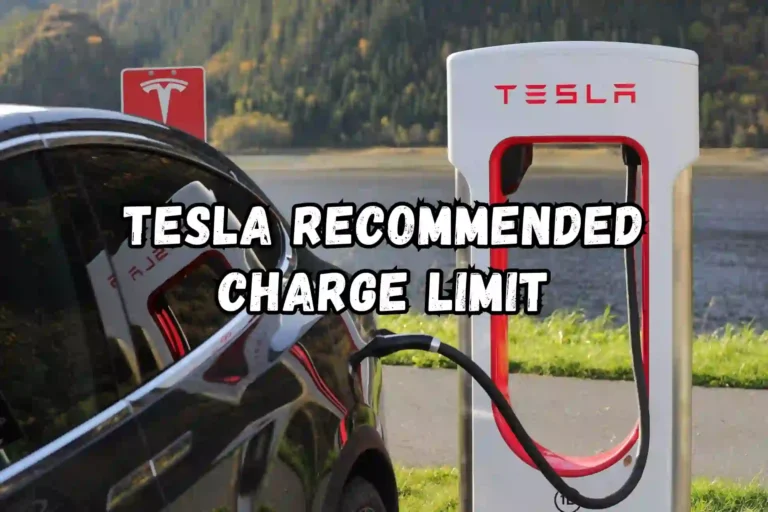Among the key components of electric mobility, the Tesla charging port stands out as one of the most important. As electric vehicles revolutionize the automotive industry, understanding the intricacies of charging infrastructure becomes increasingly important.
From the location of Tesla charging ports on different models to the types available, we cover every aspect of the Tesla charging port in this comprehensive guide, answering all the common questions and revealing expert insights.
How to Charge Tesla
When charging your Tesla, the first thing you need to do is find the charging port and open the charging port door. Once you do that, you simply plug the charging connector into the charging port, and the car will begin charging instantly. With options for charging at home, public charging stations, and the growing Tesla Supercharger network, keeping your Tesla charged up has never been easier.
Tesla Charging Port Location

Each Tesla model has a different charging port, but most are located on the left or right sides of the vehicle at the rear. The Tesla Model 3’s charging port is conveniently integrated into the rear taillight assembly, making charging easy and convenient.
Tesla Charging Port on Car
As part of Tesla’s innovative approach to design, the charging port is integrated into the car’s body. This design choice enhances aesthetics as well as simplifies the charging process for drivers. The port is integrated into the vehicle’s body to ensure a sleek and seamless appearance.
Tesla Charging Port Name
Despite its seemingly straightforward name, Tesla’s charging port represents the company’s commitment to advancing electric mobility and reducing fossil fuel dependence. Tesla’s charging port symbolizes the brand’s commitment to innovation and sustainability. Tesla emphasizes electric vehicle charging’s practicality and accessibility by naming it simply the “charging port.”
Where is the Charging Port on a Tesla Model 3

A discreet charging port can be found behind the vehicle’s rear left taillight in the Tesla Model 3. This hides the charging port from sight, blending seamlessly with the sleek form of the vehicle. By strategically placing the charging port on the exterior of the car, it ensures easy charging and maintains the aesthetic look of the car.
Tesla Model 3 Charging Port Type

A Tesla Model 3 is equipped with a charging port, the same type used in Europe, and compatible with a wide array of charging infrastructures, including home chargers and public charging stations. Tesla owners can charge their vehicles with ease thanks to this standardized port type, which ensures versatility and interoperability.
What Side is Charging Port on Tesla Model Y

This consistent placement of charging ports ensures familiarity for Tesla owners across the lineup and simplifies charging experiences. Voltage is typically available at the left rear of Tesla Model Y models.
Frequently Asked Questions
Q: Can I charge my Tesla at home?
There are many home charging solutions available from Tesla, such as their Tesla Wall Connector, which enables you to charge from the comfort of your home in a convenient and efficient manner.
Q: How fast can I charge my Tesla?
Tesla Superchargers offer rapid charging speeds, providing up to 170 miles of range in just 30 minutes, based on the charging infrastructure, the car’s capacity, and the charging rate. Charging speed is governed by various factors, including the charging infrastructure, the vehicle’s battery capacity, and the charging rate.
Q: Are Tesla charging stations compatible with other electric vehicles?
It is possible that other electric car models cannot be charged at Tesla Superchargers since they are designed specifically for Tesla vehicles. As part of its commitment to promote interoperability with other manufacturers, Tesla has expanded access to charging infrastructure.
Q: Is it possible to overcharge a Tesla battery?
A Tesla vehicle’s charging system is designed to prevent damage to the battery by maintaining battery life. Tesla vehicles contain built-in battery management systems that regulate charging to optimize battery life. Overcharging is not typically a concern because Tesla’s charging systems are designed to prevent battery damage.
Q: Can I charge my Tesla while it’s raining?
It is always a good idea to exercise caution and ensure proper safety measures when charging your Tesla in inclement weather conditions. Tesla charging connectors and ports are weather-sealed, so they can withstand various environmental conditions, including rain.
Q: How often should I charge my Tesla?
You should charge your vehicle on a regular basis, depending on your driving habits, and whether or not you have access to charging infrastructure. Tesla recommends charging your vehicle regularly to maintain optimal battery health and ensure sufficient range.
Conclusion
Tesla’s charging port goes beyond just being an essential component of electric vehicles—it represents the company’s commitment to sustainable transportation and innovation. Tesla enables drivers to embrace electric mobility confidently by providing seamless integration, accessibility, and compatibility. We are moving toward a cleaner, more sustainable future thanks to the Tesla charging port, which remains at the forefront of the electric revolution in the automotive industry.







